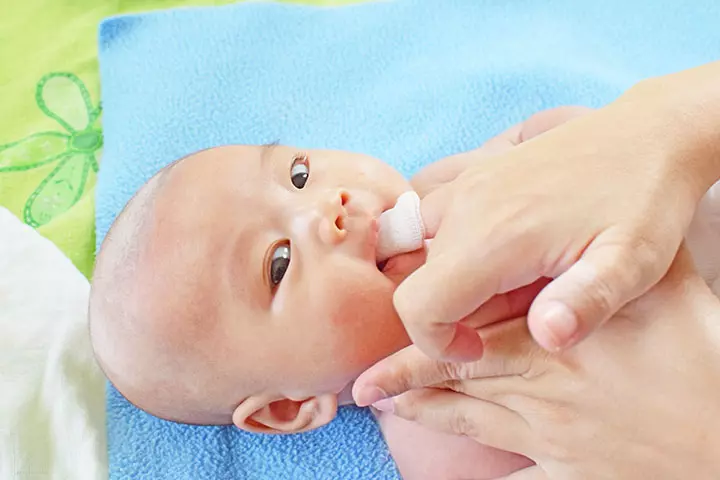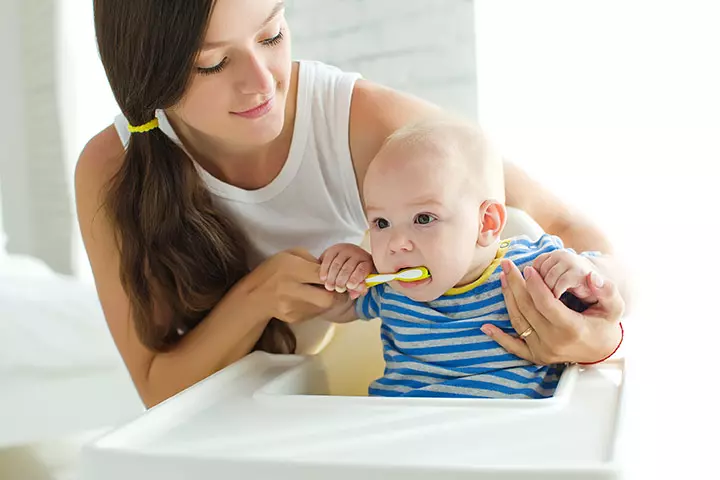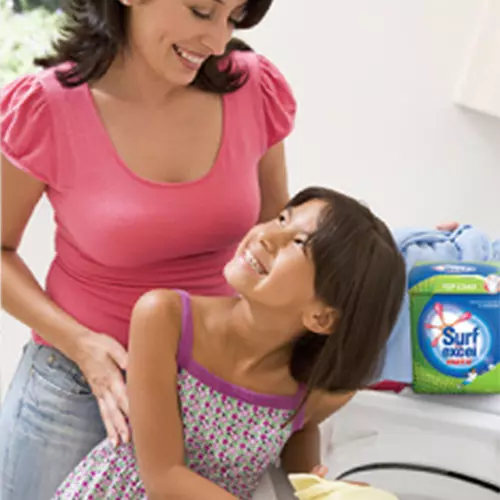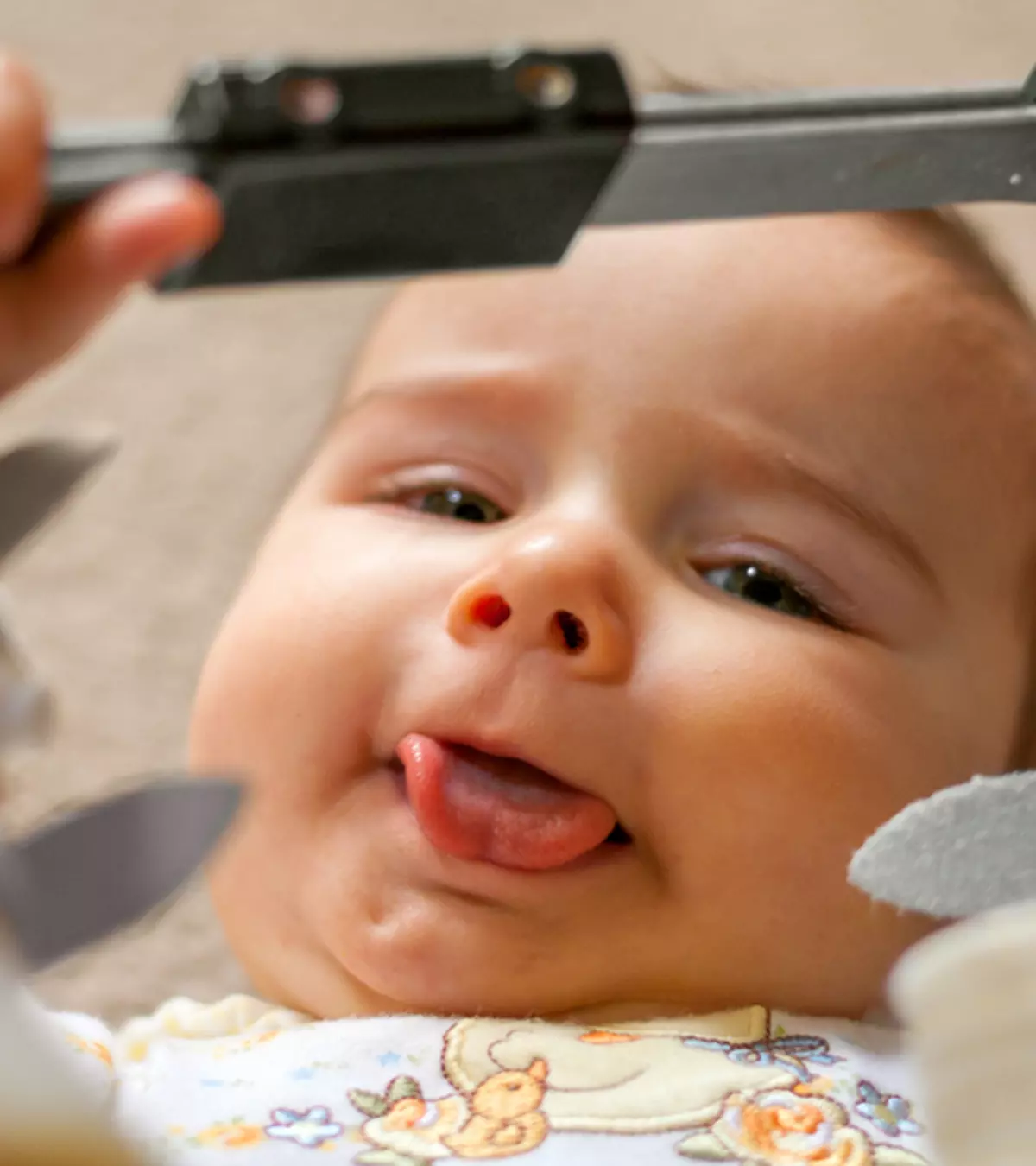

Image: iStock
We all thought that cutting of teeth is going to be a smooth sail. After all, what’s the big deal? But you might have realized by now how much of an ordeal it can be for you and your baby. Teething can cause agony in both babies and parents alike. Teething brings along sleepless nights and bothersome days. Your baby may be fussy, drooling, and also in some discomfort when they start teething. But keep calm as we bring you some tips that can help your baby with sore gums and teething discomfort. Before we jump right into it, let’s talk about teething, and its signs and symptoms.

Teething: Signs & Symptoms
The growth of teeth from a baby’s gum is known as teething. Teething normally occurs anywhere between 6 months to 1 year of age. Teething can occur early or late in some babies, as it can be influenced by family pattern. Your baby might be in slight discomfort as their teeth start erupting. Symptoms include tender and swollen gums, irritability, and trying to place objects and fingers in their mouth to ease the discomfort (1).
Your baby may refuse food due to the discomfort caused by sore gums. He/she may also sleep less compared to before. If your baby is drooling excessively, it can cause mild rash because of the skin irritation. If you find your baby rubbing their ear or cheek region, it is a consequence of reflective pain when the molars erupt through the gums (2).
Now that you know what’s teething and the common signs and symptoms of it, let’s talk about how you can help relieve the discomfort of your little munchkin:
1. Some Gum Rubbing Can Be Good
You can rub your baby’s gums using your finger or a moist gauze pad. If you are using your finger, make sure it’s clean. The pressure of rubbing can help ease the discomfort (3).
2. Control The Drooling
Your baby might be drooling excessively. Don’t worry, it’s normal when teething occurs. Having any objects like a teething ring or fingers is going to produce saliva. Keep a clean piece of cloth handy at all times to dry the saliva from the baby’s chin, and prevent skin irritation. You can also apply a water-based lotion or cream to moisturize the area (4).
3. Keep It Chill For Your Baby
An excellent remedy for soothing your little one’s gums is by giving them a cold spoon or washcloth. If you are giving a teething ring, make sure it’s chilled and not frozen (5).
4. Even Cucumber And Carrots Might Help
Has your baby started eating solids? If yes, you can start offering some hard foods for them to nibble. Start introducing peeled and chilled carrot and cucumber to your baby. The pieces that break off can pose a choking hazard. So keep a close eye on them while they are eating to make sure that they don’t choke on them (6).
5. These Over-The-Counter Pain Relievers Can Help
If your baby seems to be too fussy, you can try over-the-counter remedies such as acetaminophen (Tylenol) or ibuprofen ( Children’s Motrin, Advil). But note that ibuprofen should be given to babies who are less than 6-months-old. Also, don’t give your infant anything that has aspirin in them. Resort to over-the-counter treatments only when the home remedies don’t seem to work (7).
6. Avoid The Pain Relievers Benzocaine Or Lidocaine
Any homeopathic teething tablets or medications that contain benzocaine or lidocaine should be avoided as it can be harmful and even fatal to your baby (8). Benzocaine is used at the main ingredient in several teething sprays, gels, and lozenges. The FDA had warned against the use of benzocaine as it is associated with a serious condition called methemoglobinemia (9).
7. Start Oral Hygiene
Start rubbing your baby’s gums using a clean cloth or an infant toothbrush. You can switch to a soft-bristled toothbrush once the teeth start to appear. Use a grain-size of fluoride toothpaste to brush their teeth. When they are of 2 to 3 years of age, you can start brushing with the pea-sized amount (10). Also, make sure that your baby never sleeps with their bottle. Avoid giving too many sugary drink and treats as it can cause cavities (11).
Seek advice from your doctor if you have any concerns or queries related to teething. Also, it’s always better to get a doctor’s opinion before you give your baby any medications. If your baby has any other symptoms like cough, fever, vomiting or runny nose, consult a doctor. Has your baby started teething yet? What are the remedies that you found helpful in soothing the discomfort? Let us know in the comment section below.
Community Experiences
Join the conversation and become a part of our nurturing community! Share your stories, experiences, and insights to connect with fellow parents.





















